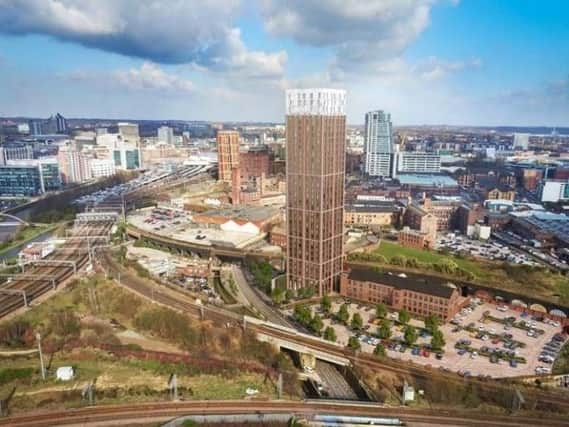First pictures of what 32-storey tower block with 300 flats in Holbeck could look like


Blueprints for a 32-storey residential tower also include renovating the Grade-II listed Midland Mills building which sits on the same site in Silver Street.
The plans, which include more than 300 flats in total, will go before a meeting of Leeds City Council’s city plans panel next week.
Advertisement
Hide AdAdvertisement
Hide AdBut, despite supporting the renovation of the mill building, heritage organisations say they have major concerns about the scale of the tower, and the impact it will have on its surroundings.
A letter to the council from the Victorian Society stated: “(We) object strongly to the proposed thirty-two storey tower, which would have a massive and far from beneficial impact, not just on the setting of Midland Mills, but on the wider townscape, the Holbeck Conservation Area and the general appearance and character of the city as a whole.
“This aspect of the scheme, and the serious and manifold harm it would cause, has not been justified.”
Leeds Civic Trust submitted a letter last August, which stated: “This location, overshadowing the core heritage element of the Holbeck Urban Village, would not be an appropriate site for a tall building.
Advertisement
Hide AdAdvertisement
Hide Ad“The site would be far better used for low-rise new build elements of a scale more compatible with the listed mill, the railway viaduct and the other historic buildings in the area.”
The plans would be split between 22 flats in the existing Midland Mills building, and the remaining 284 in the newly-built Midland Tower. The complex would also include a communal gym, resident’s lounge and cinema room for the occupants.
A report by council officers into the plans concludes: “It is considered that the proposal would result in a high quality, appropriate development and would add to the vibrancy and vitality to the area and furthering its regeneration.
“The proposals would allow important underused historic areas of the listed buildings to be brought back into use and safeguard their long term future, whilst it is acknowledged that there will be some (but less than substantial) harm by virtue of the extent of demolition and alterations, this is of a tolerable level when balanced against the public benefits of the regeneration of the buildings.”
A decision is set to be made by the plans panel at a meeting in Civic Hall on Thursday, January 24.